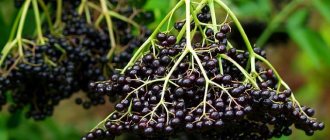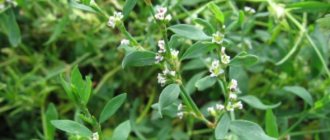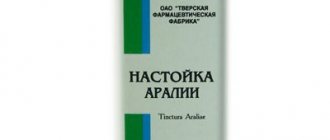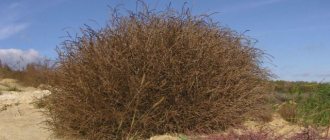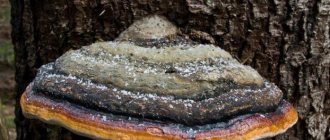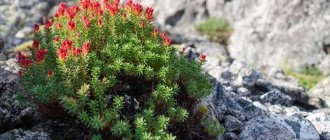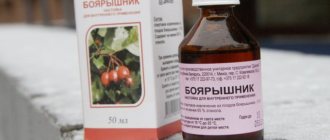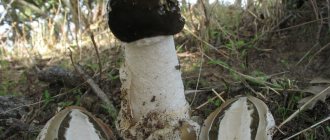What does bearberry look like and where does it grow?
Common bearberry (Arctostaphylos uva-ursi) is a perennial evergreen plant from the Ericaceae family, which can also be found under the name bear's ear. It is a branched creeping shrub up to 30 cm in height with recumbent stems.
The leaves of the plant are oblong, ovoid, with a leathery surface. At the base, the plates taper to a short petiole, and at the top they are rounded. In May and June, bearberry blooms with drooping white-pink buds, collected in carpal apical inflorescences. From August to the end of September it bears fruit with bright red drupes with mealy pulp and five seeds inside.
Bear's ear usually grows in clumps
The plant is widespread in the United States, Canada, and northern Eurasia. Prefers deciduous and pine forests, clearings and burnt areas, rocky slopes. Selects dry and well-lit places. It reacts negatively to proximity and competition for resources with other plants, so it is almost impossible to find bearberry in dense thickets and meadows.
Where does bearberry grow in Russia?
In Russia, the plant is widespread in the Far East and Siberia. In the middle zone it is rare and mainly in non-chernozem areas. Sometimes you can see a bear's ear in the Caucasus.
Chemical composition of bearberry
The benefits and harms of bearberry are determined by the chemical composition of the plant. The leaves and stems of bear's ear contain:
- flavonoids and phytoncides;
- antioxidants;
- gallic acid;
- arbutin;
- vitamin C;
- tannins;
- ursolic acid;
- hydroquinone;
- quercetin and isoquercetin;
- methylarbutin;
- quinic and malic acids;
- myricitrin and myricetin.
Bear ears should be used with caution so that the active substances do not harm the body. But when used according to prescriptions, the herb will help cope with a wide range of diseases.
What does bear ears herb treat and help with?
Alcohol and water products based on beneficial plants strengthen the body. Bear ears can be used for respiratory and colds, digestive and metabolic disorders, and bacterial processes. In particular, bearberry:
- fights infections and relieves inflammation in the urinary tract;
- strengthens blood vessels and prevents the development of heart diseases;
- reduces blood sugar levels;
- improves the condition of bronchitis, pneumonia and tuberculosis;
- relieves pain and restores mobility in rheumatism, gout and arthritis;
- removes waste and toxic substances from the body, improves liver function;
- has a diuretic effect and helps with cystitis and urethritis;
- stops bleeding;
- disinfects cuts and wounds when used externally;
- eliminates heartburn and improves well-being with gastritis.
You can use the medicinal properties of bearberry for skin care - the plant has a rejuvenating and tonic effect.
Products based on bear ears have a calming effect and help with neuroses
What do bearberry leaves help with?
Traditional medicine most actively uses the leaves of the plant. They contain gallic and ursulic acids, as well as tannins. Infusions and decoctions of leaves help with diarrhea and intestinal inflammation, with bacterial processes in the genitourinary and respiratory systems. The products can be used both internally and externally to treat damage and irritation on the skin.
Beneficial properties of bearberry
The berries of the plant are also in demand in health recipes. They contain a lot of ascorbic acid and have healing and antipyretic properties.
Bearberry fruits are used for slow digestion, enteritis and cholecystitis, jaundice and hepatitis. Decoctions and infusions of berries are beneficial for eye diseases and help stop bleeding.
Beneficial properties of bearberry for women
The anti-inflammatory properties of bear's ears make them especially valuable in the treatment of female reproductive diseases. The plant is often used for cystitis; it normalizes the functioning of the excretory system, eliminates pain and discomfort. You can use herbal infusions and decoctions for sexually transmitted infections and uterine bleeding.
Beneficial properties of bearberry for men
Bear ears are recommended for use by men with prostatitis. Tinctures and decoctions based on the plant relieve inflammation and pain, eliminate the bacterial process and facilitate urination.
Eating bearberry reduces the risk of developing prostate cancer.
Benefits of bearberry for children
The bear's ears plant has a beneficial effect on children's immunity and improves the condition of intestinal disorders. Kissel based on bearberry berries is prescribed for gastritis and diarrhea. The product relieves pain and normalizes digestion.
However, only teens over 12 years of age are allowed to offer medicinal bears' ears. Many substances in the fruits and leaves of the plant are toxic and can cause harm to the baby’s body.
Attention! You can give bear berries or decoctions to a child or teenager only after consulting a pediatrician. The plant has strict contraindications.
Beneficial properties of bearberry for cystitis
Bearberry is especially good for treating cystitis; it is very popular among women. Decoctions and infusions of the plant eliminate the bacterial process and relieve inflammation, quickly relieve pain and spasms, and normalize urination.
Since bearberry is a natural diuretic, it removes excess fluid from the body and cleanses the bladder of accumulated harmful substances and toxins. The use of bear ears in the complex treatment of cystitis helps to quickly eliminate unpleasant symptoms and restore good health.
Methods for preparing and using bearberry
The healing herb is used to prepare alcoholic and aqueous remedies. Traditional medicine recipes are quite simple and allow you to make effective medicines at home.
Bearberry tincture
Bearberry is useful for rheumatism, gout and cancer pain. An alcohol tincture brings a good effect, and the remedy is prepared as follows:
- 40 g of dry leaves of bear's ear are poured into a glass vessel;
- pour 250 ml of high-quality vodka into the raw material;
- infuse the solution in a dark place for two weeks.
The strained product is taken 15 drops three times a day on a full stomach.
Bearberry tincture has a relaxing effect and helps with insomnia
Infusion of bearberry leaves
An aqueous infusion can be prepared from the leaves of the plant; it will be beneficial for diarrhea and intestinal inflammation. The recipe looks like this:
- pour a large spoonful of dry leaves into a glass of hot water;
- cover the container with a lid and leave for an hour;
- passed through gauze.
Bearberry has an expectorant effect, so drinking an infusion of its leaves is useful for bronchitis. You need to drink the product in the same way as regular tea.
Important! Bearberry infusion has a bitter taste, but diluting the drink with honey or, especially, sugar is not recommended.
We recommend reading: Honey: beneficial and medicinal properties, contraindications
You are allowed to drink 2-3 cups of bearberry per day
Recipes for preparing a decoction of bearberry leaves
For stomach diseases, bleeding and swelling, traditional medicine suggests using a decoction of bear ears. One popular recipe looks like this:
- dry leaves are ground into powder using a mortar;
- measure out a large spoonful of raw materials and pour a glass of boiling water;
- place the mixture in a water bath and heat for 15 minutes;
- remove from heat and keep covered for another half hour.
The strained product is topped up with clean liquid to the initial volume and drunk 50 ml three times a day. You need to take the decoction after meals so that the tannins in the drink do not irritate the gastric mucosa.
The use of bear's ears herb for the kidneys is based on another recipe:
- measure out 10 g of dry bearberry leaves;
- pour 500 ml of cold water;
- leave at room temperature under the lid for 12 hours;
- After the expiration date, heat over low heat for ten minutes and filter.
Drink 30 ml of the product three times a day, also on a full stomach.
Bearberry decoctions are prepared in small portions, since they are stored for no more than two days in the refrigerator
Folk recipes
It is not enough to know that bearberry is a healing and effective plant; the indications for its use must be significant. It is great if you did not diagnose the disease yourself, but confirmed it with a doctor, and that you shared your desire to strengthen bearberry treatment with the doctor. This will ensure the safety of the treatment process.
Decoction
For the decoction, you can use pharmaceutical products or dry the leaf yourself.
The decoction is indicated for edema, cystitis, chronic gastritis, urethritis, chronic nephritis, uterine bleeding, diabetes. Externally it can be used to treat poorly healing wounds and abrasions.
Recipe:
- Grind 1 tablespoon of dried bear ears leaves to a powder;
- pour 1 cup of boiling water into this mass, place the resulting composition in a water bath;
- heat the mixture for 20 minutes, then leave for 40 minutes;
- Strain the resulting product and bring it with boiled water to the original volume.
Take 50 ml three times a day, 30 minutes after final preparation.
Infusion
For cystitis and other processes in the urinary system, you can use a cold infusion.
In advanced cases of disease, it is recommended to use an infusion, because it contains more useful substances than broth
Preparation is simple: combine 10 grams of raw materials (dry leaves) with 2 glasses of cold water. Leave for 12 hours, heat for 5 minutes. Strain the mixture without bringing to a boil. It is in this way that you can make sure that the leaves give up the maximum of useful elements, with the exception of tannins.
This method of preparing the infusion reduces the likelihood of side effects. The product is mild, but nevertheless effective. You should drink the infusion half an hour after meals, 3 times a day, 30 ml. Fresh infusion can be stored in the refrigerator for two days.
Tincture
Alcohol tincture is used for insomnia, diseases of the nervous system, urolithiasis, gout and rheumatism.
Place 40 g of dry, already crushed leaves in a glass jar, add 230-250 g of vodka, and leave to infuse for 2 weeks in a dark place. The finished tincture should be strained. Take the composition no more than 15 drops three times a day after meals.
Extract
This is a stronger remedy. It is taken as part of complex therapy for pathologies of the urinary tract. The extract is prescribed to men for prostatitis, cystitis, and urethritis. In gynecology, it can be used for vaginitis and cervititis. Cosmetologists use bearberry extract to cleanse the skin, accelerate regeneration and rejuvenation processes. The extract can stop hair loss and stimulate the functioning of hair follicles.
How to prepare the extract:
- Grind bearberry leaves, prepare an extractant (alcohol or water);
- For 1 part of raw material, take 5 parts of extractant;
- first add 3 parts of the extractant to the leaves - and keep for 4 days at room temperature;
- drain the extract, squeeze out the grass, pour in 1 part of the extractant;
- After 2 days, repeat the process, but you need to infuse the product for 1 day;
- Mix all the extracts and store in a jar in the refrigerator.
It is recommended to take the extract half an hour before meals, 1 tablespoon 5 times a day. Therapy should not last more than a month.
Tea
You can also brew tea with bearberry. The classic brewing method is as follows: pour one tablespoon of crushed leaves into a glass of hot water. Wait for the tea to brew. And then you can drink it as a regular drink.
Tea with bearberry has a general strengthening effect
However, you can buy tea at the pharmacy, it is packaged in filter bags. This drink does not require special preparation: brew a bag and take half a glass with meals.
Popular collections with bearberry
As part of the preparations, bear ears also exhibit better properties.
The most popular and effective preparations with bearberry:
- Collection to eliminate insomnia and neuroses. Mix bearberry and motherwort in equal parts. Take 2 tablespoons of this mixture, add 3 cups of water and place it all in a water bath. Cook until the water has evaporated by a third. Cool and strain. Take 50 ml before meals.
- Diuretic collection. Mix bear ears leaves, licorice root, cornflower flowers in a ratio of 3 to 1 to 1. Add 1 tablespoon of the mixture to 250 ml of boiling water, leave for 20 minutes. Take 3 times a day, 1 tablespoon.
- Collection from edema. Mix corn silk, birch leaves, and bearberry in equal proportions. Steam 100 g of the collection with 200 ml of boiling water. Insist in a dark place. Take half a glass three times a day, an hour after meals. Sometimes this collection is called weight loss aid.
It only remains to add that pharmaceuticals with bear ears also exist. Bearberry is included in such products as Uriflorin, Ursul, Urokam, Uriflan.
The use of bear's ear herb in folk medicine
Bear ears are found in many homemade health recipes. They are used both in pure form and in combination with other useful plants.
How to take bearberry for cystitis in women
To eliminate inflammation due to cystitis, use an infusion of bear's ear leaves. The recipe looks like this:
- two large spoons of dry bearberry pour 500 ml of hot water;
- put the solution in a dark place for a day;
- After the time has passed, filter.
The infusion should be taken after meals, 50 ml three times a day. The course of treatment with bearberry is continued for ten days, the drink is taken warm.
For hemorrhoids
The healing properties of bearberry help with inflammation of hemorrhoids, promote healing and stop bleeding. Traditional medicine recommends using a decoction of the plant. They do it like this:
- 30 g of dry bearberry leaves are steamed with 800 ml of boiling water;
- The solution is heated in a water bath for 15 minutes;
- the product is filtered and poured into a sitz bath.
The liquid temperature should be no more than 37 °C. The lower part of the body must be immersed in the bath for five minutes. The procedures should be repeated every evening until the condition improves.
For nervous disorders
Bearberry leaves have a good effect on increased anxiety and insomnia, especially in combination with other plants. The healing recipe looks like this:
- 30 g of dry bearberry is mixed with an equal amount of motherwort herb;
- measure out two large spoons of raw materials and pour in 750 ml of liquid;
- Boil the product in a water bath until the total volume is reduced by a third;
- cool the broth and filter.
The finished mixture is taken 50 ml on an empty stomach up to three times a day.
For gout
Among the indications for the use of bearberry leaves is gout, accompanied by pain and swelling of the joints. Traditional medicine recommends this decoction:
- three large spoons of bearberry leaves are steamed with 500 ml of hot liquid;
- simmer the mixture over low heat for 15 minutes;
- Remove from heat and cover until cool.
The strained decoction is taken 50 ml with meals twice a day.
In a decoction of bearberry, you can soak gauze bandages and apply them to sore joints for half an hour.
For tuberculosis
Bearberry copes well with bacterial processes and alleviates the condition of tuberculosis. The following remedy is prepared for treatment:
- two large spoons of dried leaf plates are poured with 100 ml of vodka;
- seal the vessel and put it in a dark cabinet for two weeks;
- From time to time the tincture is removed and shaken.
The finished product is filtered to remove sediment and taken ten drops three times a day after meals.
For intestinal disorders
Bearberry is used to relieve abdominal pain and diarrhea. The following remedy has a good effect:
- a small spoon of bear grass is poured into 150 ml of water;
- add 250 ml of milk;
- bring the mixture to a boil and leave covered for another hour.
You need to take the drink several sips throughout the day until you feel better.
Beneficial properties of bearberry, its medicinal use
In nature, the common bearberry acts primarily as a pioneer species, populating almost barren lands. Along with heather and some soil lichens, it grows where no other plants are capable of living.
Very often this shrub settles in places with disturbed soil cover - in old sandy quarries, clearings and burnt areas. Considering that the soil here is often sandy, bearberry also plays another important role - it stabilizes the soil, preventing it from being washed out and swollen. And sand dunes along the shores of seas and large lakes also bind bearberry bushes, stopping their movement.
Bearberry fruits are readily eaten by forest birds, and even by the same bears (it’s not for nothing that they are “bear ears” and “bear grapes”!).
One or two “berries” will not harm a person. But I don’t recommend “overeating” (you can see one of the comments to the article about poisonous berries).
Bearberry - medicinal properties
The leaves of bearberry are used for medicinal purposes. First of all, they have a pronounced diuretic effect (as, indeed, do lingonberry leaves). In addition, bearberry has an antimicrobial and anti-inflammatory effect, which, in combination with a diuretic, allows it to be effectively used for various diseases of the genitourinary system.
Bearberry leaf as a medicine is recognized as “scientific” medicine and is sold in pharmacies. But still, it is most widely used by folk medicine.
Urolithiasis, diseases of the bladder and urinary tract are the main indications for the use of bearberry leaf.
There is information about the use of this plant as the first ever remedy for the treatment of sexually transmitted diseases in the countries of Northern Europe, Russia and Siberia.
The astringent effect of bearberry preparations (also in combination with antimicrobial and anti-inflammatory effects) allows it to be used for chronic diarrhea.
In the treatment of withdrawal symptoms (in other words, a hangover, which, unfortunately, is very important after long holidays), bearberry can also provide very effective help.
Indeed, in this case, along with restoring the acid-base balance in the body (cabbage pickle), increasing the consumption of liquid (any hydrocarbonate mineral water without gas), it is also necessary to quickly remove the poisons that have poisoned it from the body. This is where an infusion of bearberry leaves can help.
Bearberry leaves are usually used for medicinal purposes in the form of decoctions or infusions. But it is highly advisable to use them (as, indeed, any other plant raw materials) only after consultation with a specialist!
There are contraindications to their use. These include, first of all, acute diseases of the kidneys and bladder. Bearberry is contraindicated during pregnancy.
Treatment of cystitis with bearberry leaves will be effective only if the urine is alkaline. The fact is that arbutin and methylarbutin - the most important biologically active substances that make up the leaf - only in this case will they turn into hydroquinone, which has a healing effect. So a preliminary urine test is necessary for treatment. If the urine is acidic, you should first neutralize it by drinking soda.
An overdose of bearberry preparations can also cause unpleasant consequences - primarily vomiting. That is why bearberry is most often used not in its pure form, but as part of a mixture with other medicinal plants. For example, there is a diuretic mixture for preparing an infusion, containing, along with bearberry leaves (3 parts), also licorice root (1 part) and cornflower flowers (1 part).
Rules for collecting bearberry leaves
Bearberry leaves should be collected in the spring, before flowering, or in the fall, during fruiting. In this case, the leaves are collected directly, or the tops of shoots up to 3 cm long are cut off using pruning shears.
Under no circumstances should the bush be uprooted! Bearberry recovers with difficulty and grows slowly. Its stems are not used, and in any case will be thrown away. Repeated harvesting of leaves in one place should be carried out no earlier than after 3 years.
The leaves are dried, scattered in a fairly thin layer, under a canopy, or in dryers at a temperature not exceeding 40 °. After drying, the leaves, if they were on the cut shoots, are torn off and the stems are thrown away.
A dried bearberry leaf is sifted through a sieve with a hole diameter of about 5 mm (to remove debris), placed in bags and stored in a dry place.
When properly collected and used, bearberry can provide a person with very effective help in treating a whole range of diseases.
Best regards, Alexander Silivanov
Application in cosmetology
The medicinal properties of the bear's ear plant are used for skin and hair care. Infusions and decoctions of bearberry leaves lighten the epidermis, make age spots and freckles less noticeable, rejuvenate and refresh the face.
To improve skin color, you can use the following product:
- 25 g of dry plant are poured with 300 ml of liquid;
- heat in a water bath for ten minutes;
- filter and cool until warm.
Soak a cotton pad in the finished infusion and wipe your face 6-7 times a day. Additionally, the product will help get rid of acne and inflammation.
Important! Infusion of bear ears can be used to rinse hair. The solution will lighten the strands a little, regulate their fat content and stop hair loss.
Use of bearberry in medicine
Bearberry-based preparations are used to treat:
- jade;
- nephrolithiasis;
- prostate diseases;
- proteinuria;
- nocturnal enuresis;
- pyuria;
- various inflammations and infections of the urethra;
- diarrhea;
- intestinal colic;
- flatulence;
- pelvic inflammation;
- urethritis;
- bacterial urinary tract infections.
In order for treatment with bearberry preparations to be effective, it is necessary to ensure proper alkalinization of the urine, that is, maintain a pH level above 7.
This state will be achieved by a balanced diet rich in dairy and meat products, vegetables and adequate hydration of the body.
Contraindications
Bearberry, although very useful for treating and preventing urinary tract infections, should not be used for more than seven days and no more than five times a year. Overdose may cause side effects such as abdominal pain, nausea and tinnitus.
It is also not recommended to administer bearberry-based preparations to pregnant women, nursing mothers, and people struggling with diseases and infections of the digestive tract.
Bearberry decoction recipe
The healing effect of bearberry can be obtained in decoctions and herbal mixtures made from the plant.
Ingredients needed for the decoction:
- 2 tablespoons dried bearberry leaves;
- 1 glass of water.
Preparation: Pour water over dry bearberry leaves and cook for several minutes. Strain. To achieve best results, the finished decoction should be drunk twice a day - morning and evening, but no longer than seven days.
Bearberry goes well with other herbs such as horsetail, linden, birch flower, chamomile and strawberry leaves. Herbal mixtures help cleanse the urinary tract and reduce the effects of bladder inflammation.
Contraindications to the use of bearberry
The instructions for using bear's ears herb note that the plant has contraindications. You cannot use decoctions and infusions:
- with renal failure;
- with glomerulonephritis;
- for individual allergies.
You should not drink products based on bear ears during pregnancy, as the herb can cause a miscarriage. Contraindications include the lactation period - bearberry is highly likely to harm the baby.
What are the dangers and side effects of bearberry?
When used according to prescriptions, the plant rarely causes harm. But if you exceed the recommended dosage, side effects of bearberry may develop - vomiting, nausea, diarrhea and fever.
With long-term treatment, bear's ears can irritate the kidney tubules - this often leads to an exacerbation of inflammatory processes. To reduce the likelihood of negative consequences, bearberry should be consumed together with plants that have soothing and healing properties. In addition, during therapy it is necessary to exclude protein foods and drugs containing alkaloids and alkalis from the diet.
Contraindications to treatment
Bearberry should not be taken if:
- acute renal failure;
- glomerulonephritis;
- children under 12 years old;
- lactating and pregnant women;
- patients with hypersensitivity to the plant.
Bearberry is contraindicated during pregnancy, since the plant has a tonic effect on the muscles of the uterus, which can lead to miscarriage or premature birth. Despite this, some doctors prescribe plant preparations to pregnant women when inflammatory diseases of the urinary tract and edema are detected, considering them safer than chemically synthesized drugs. However, there are limitations for this group of patients, and they should not be neglected.
When and how to collect bearberry
For medicinal purposes, bear ears are collected in April, before the decorative period begins, or in the fall, after the berries have finally ripened. The video of harvesting bearberry leaves and shoots notes that it is necessary to cut only 3 cm of branches along with the plates. It is not recommended to dig up the entire plant.
Bearberry retains medicinal properties for up to two years
Drying and harvesting of bearberry is carried out outdoors under a canopy in warm weather or indoors with good ventilation. If desired, you can use a kitchen oven - heat it to a maximum of 55 ° C. The leaves are separated from the shoots after the raw material has dried.
Bear ears are stored in sealed glass jars or fabric bags. The workpieces should be kept in a dark place with low humidity.
Collections with bearberry and recipes for certain diseases
Collection for the treatment of neuroses, insomnia
Mix bear's ear and motherwort grass in equal parts. Take 2 tbsp. mixture, add 3 cups of water to them and place everything in a saucepan and in a water bath. Cook until the liquid has evaporated by 1/3. Cool and strain.
Take 50 ml before meals (before each meal).
Collection for the treatment of cystitis
Mix 20 gr. hernia and bearberry, add 5 grams to the mixture. dried parsley and the same amount of celandine. Grind the plant mixture and add 1 cup of boiling water to it, leave for 60 minutes.
Take 3 times a day, 30 minutes after meals, 50 ml.
Diuretic collection
Take bearberry leaves, licorice root and cornflower flowers in a ratio of 3:1:1. Add 1 tbsp to 250 ml of boiling water. this mixture and leave for 20 minutes.
Take 1 tbsp. three times a day.
Recipe for gout
Pour 500 ml of water into a saucepan, put 3 tbsp. dry bearberry leaves, put on fire and wait until it boils. Simmer for 15 minutes, remove from heat and cover with a lid, wait until it cools down. Strain.
Take with meals, 2 times a day. You can also moisten a gauze bandage in this decoction and apply it to sore spots for 15 minutes. This treatment is carried out until the pain completely disappears.
Collection for pyelonephritis
Take 10 grams of bearberry leaves, birch leaves, horsetail grass, licorice root and 20 grams of lingonberry leaves, flax seeds and nettle herbs. 1 tbsp. Pour 200 ml of boiling water over this mixture, heat in a water bath for 15 minutes and leave for 60 minutes.
Take 1/3 cup twice a day.
Collection for edema
Mix birch leaves, corn silk and bearberry in equal parts, 100 g. steam the collection with 200 ml of boiling water, leave for 24 hours in a dry, warm place.
Take half a glass 3 times a day, 60 minutes after meals.
Medicine for the treatment of tuberculosis
2 tbsp. Mix dry raw materials of the plant with 100 ml of vodka, leave in the dark for 14 days, strain.
Take 10-15 drops after meals, 3 times a day.
Collection for the treatment of rheumatism
In equal proportions, take bearberry leaves, horsetail grass, flaps of bean pods, corn stigmas, sweet grass and knotweed grass, willow bark, cornflower flowers, silver birch buds. Grind the plant mixture, take 1 tbsp. this mixture and pour 250 ml of boiling water, boil for 10 minutes and leave for another half hour, strain.
Drink 100 ml h/w 40 minutes after meals 5 times a day.
Collection for the treatment of atherosclerosis
Take equal proportions of bear's ear, heart-shaped linden flowers, oregano, peppermint leaves, large plantain, motherwort, horsetail, marsh cudweed and rose hips, and chop. 1 tbsp. Pour boiling water (2 cups) over the mixture and leave for 40 minutes, squeeze.
Take 1 glass twice a day. 60 minutes after eating.
